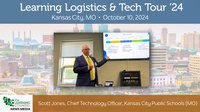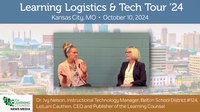Districts implementing Next Generation Science Standards (NGSS) will be approaching warp speed when adopting digital content and curriculum. For the first time there is a coherent map of performance expectations in K-12 science...with the added bonus of each being directly connected to math and English Common Corestandards.
The lack of NGSS-aligned textbooks has forced districts and teachers out into the vast market space of video, apps, devices, e-books, storage, social media, and teleconferencing options. As a science teacher for almost 15 years I have witnessed how this space has increased and evolved, and as I facilitate implementation of NGSS for a diverse district in California the reliance on digital content and curriculum has become fundamental.
The following are some thoughtful questions to ask and things to understand if going through the significant process of reviewing, revising, adapting or adopting digital science curriculum.
Which states have adopted NGSS?
The first state to adopt was Rhode Island in 2013, with Kentucky, Kansas, Maryland, and Vermont soon following. Arkansas became the latest state to adopt in June 2015; the other states are California, Delaware, Illinois, Nevada, New Jersey, Oregon,Washington, West Virginia, and D.C.
Timelines vary by state, and even by district with full implementation across K-12 not occurring for 4-6 years after adoption.
How much funding for NGSS?
Unlike Common Core standards, states do not receive federal money when adopting NGSS. Even still, in 2015/16 California school districts have access tobillions in discretionary funding and $460 million for professional development for their LCAP (budget). Science still takes a back seat to math and ELA, so many publishers and resources tie their materials into those subjects to create funding opportunities.
What is needed and the next steps?
Take inventory, organize and validate. Knowing what was already adopted, devices available, or what apps teachers are already using is just a small bit of information that can be surveyed. Also, having a stakeholder who organizes the options and facilitate a vetting process to evaluate digital curricula can further support a NGSS classroom.
Best practices and lessons learned.
Since 2010, 43 states have adopted Common Core standards and many of those states also began to adopt NGSS in 2013. This provides a unique opportunity for states and districts to “copy-and-paste” successful efforts already made with training, adopted curriculum, and supporting pedagogy. Also, providing a chance to learn from mistakes and missed opportunities.
Professional development-Authentic situations.
Like any typical faculty, there are diverse needs and interests. Learning opportunitiescan be hyper-focused or cover an array digital curriculum. Either way, providing authentic situations for the end-users to also asses learning, align NGSS standards, engage students, communicate home, or develop lessons that are cross-curricular and connected to Common Core are important.
Develop Relationships with Vendors.
I am constantly contacted by vendors because the hunger and money is out there for buying STEM curriculum. For many states there will not be NGSS aligned textbooks for several years, so quality digital curriculum are imperative. Therefore, coordinating with fiscal, human, and materials resources becomes as essential as working with faculty when adopting technology to support NGSS.
This is not an inclusive list, but it is a great start when considering digital content and curricula for NGSS. The shifts in our science classrooms will be supported as districts explore strange new worlds of technology, seek out new digital content and curriculum, and help teachers boldly go where no teacher has gone before.











